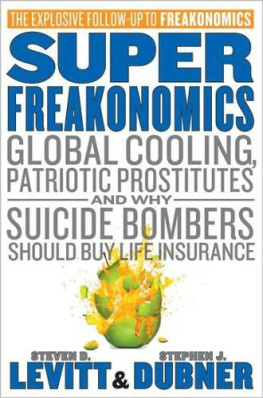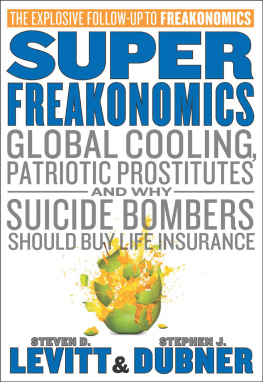NOTES
INTRODUCTION: PUTTING THE FREAK IN ECONOMICS
THE PERILS OF WALKING DRUNK: The brilliant economist Kevin Murphy called our attention to the relative risk of walking drunk. For background on the dangers of drunk driving, see Steven D. Levitt and Jack Porter, How Dangerous Are Drinking Drivers? Journal of Political Economy 109, no. 6 (2001). / 2 One of the benefits of a cumbersome federal bureaucracy is that it hires tens of thousands of employees to staff hundreds of agencies that collect and organize endless reams of statistical data. The National Highway Traffic Safety Administration (NHTSA) is one such agency, and it supplies definitive and valuable data on traffic safety. Regarding the proportion of miles driven drunk, see Impaired Driving in the United States, NHTSA, 2006. / 2 For drunk pedestrian deaths, see Pedestrian Roadway Fatalities, NHTSA, DOT HS 809 456, April 2003. / 2 For drunk driving deaths, see Traffic Safety Facts 2006, NHTSA, DOT HS 810 801, March 2008. / 2 They lie down to rest on country roads: see William E. Schmidt, A Rural Phenomenon: Lying-in-the-Road Deaths, The New York Times, June 30, 1986. / 3 The number of Americans of driving age: here and elsewhere in this book, population statistics and characteristics are generally drawn from U.S. Census Bureau data. / 3 Friends Dont Let Friends: By total happenstance, we recently met one of the creators of the original slogan Friends Dont Let Friends Drive Drunk. Her name is Susan Wershba Zerin. In the early 1980s, she worked at the Leber Katz Partners ad agency in New York and was the account manager on a pro bono anti-drunk-driving campaign for the U.S. Department of Transportation. Elizabeth Dole, the secretary of transportation, was our key contact, she recalls. The phrase Friends Dont Let Friends Drive Drunk was written as the campaigns internal strategic statement, but it proved so memorable in-house that it was adopted as the campaigns tagline.
THE UNLIKELY SAVIOR OF INDIAN WOMEN: This section draws substantially from Robert Jensen and Emily Oster, The Power of TV: Cable Television and Womens Status in India, Quarterly Journal of Economics, forthcoming. For more on living standards in India, see the United Nations Human Development Report for India; National Family Health Survey (NFHS-3), 200506, India, The International Institute for Population Sciences and Macro Intl.; and India Corruption Study 2005, Center for Media Studies, Transparency International, India. / 4 On the unwantedness of girls in India and the use of ultrasounds to identify them for abortion, see NFHS-3 report; and Peter Wonacott, Indias Skewed Sex Ratio Puts GE Sales in Spotlight, The Wall Street Journal, April 19, 2007; and Neil Samson Katz and Marisa Sherry, India: The Missing Girls, Frontline, April 26, 2007. / 4 For more on the persistence of dowry in India, see Siwan Anderson, Why Dowry Payments Declined with Modernization in Europe but Are Rising in India, Journal of Political Economy 111, no. 2 (April 2003); Sharda Srinivasan and Arjun S. Bedi, Domestic Violence and Dowry: Evidence from a South Indian Village, World Development 35, no. 5 (2007); and Amelia Gentleman, Indian Brides Pay a High Price, The International Herald Tribune, October 22, 2006. / 4 The Smile Train story comes from author interviews with Brian Mullaney of Smile Train; see also Stephen J. Dubner and Steven D. Levitt, Bottom-Line Philanthropy, The New York Times Magazine, March 9, 2008. / 4 For more on the missing women of India, see Amartya Sen, More Than 100 Million Women Are Missing, The New York Review of Books, December 20, 1990; Stephan Klasen and Claudia Wink, published in K. Basu and R. Kanbur (eds.), Social Welfare, Moral Philosophy and Development: Essays in Honour of Amartya Sens Seventy-Fifth Birthday (Oxford University Press, 2008); and Swami Agnivesh, Rama Mani, and Angelika Koster-Lossack, Missing: 50 Million Indian Girls, The New York Times, November 25, 2005. See also Stephen J. Dubner and Steven D. Levitt, The Search for 100 Million Missing Women, Slate, May 24, 2005, which reported on Emily Osters finding of a connection between missing women and hepatitis B; but see also Steven D. Levitt, An Academic Does the Right Thing, Freakonomics blog, The New York Times, May 22, 2008, in which the hepatitis conclusion was found to be faulty. / 5 Son worship in China: see Therese Hesketh and Zhu Wei Xing, Abnormal Sex Ratios in Human Populations: Causes and Consequences, Proceedings of the National Academy of Sciences, September 5, 2006; and Sharon LaFraniere, Chinese Bias for Baby Boys Creates a Gap of 32 Million, The New York Times, April 10, 2009. / 5 Information about bride burning, wife beating, and other domestic atrocities can be found in Virendra Kumar, Sarita Kanth, Bride Burning, The Lancet 364, supp. 1 (December 18, 2004); B. R. Sharma, Social Etiology of Violence Against Women in India, Social Science Journal 42, no. 3 (2005); India HIV and AIDS Statistics, AVERT, available at www.avert.org/indiaaids.htm; and Kounteya Sinha, Many Women Justify Wife Beating, The Times of India, October 12, 2007. / 5 The condom is not optimized for India: see Rohit Sharma, Project Launched in India to Measure Size of Mens Penises, British Medical Journal, October 13, 2001; Damian Grammaticus, Condoms Too Big for Indian Men, BBC News, December 8, 2006; and Madhavi Rajadhyaksha, Indian Men Dont Measure Up, The Times of India, December 8, 2006. / 5 Apni Beti, Apna Dhan is described in Fahmida Jabeen and Ravi Karkara, Government Support to Parenting in Bangladesh and India, Save the Children, December 2005.
DROWNING IN HORSE MANURE: See Joel Tarr and Clay McShane, The Centrality of the Horse to the Nineteenth-Century American City, in The Making of Urban America, ed. Raymond Mohl (Rowman & Littlefield, 1997); Eric Morris, From Horse Power to Horsepower, Access, no. 30, Spring 2007; Ann Norton Greene, Horses at Work: Harnessing Power in Industrial America (Harvard University Press, 2008). Also based on author interviews with Morris, McShane, and David Rosner, Ronald H. Lauterstein Professor of Sociomedical Sciences at Columbia University. / 11 Climate change will destroy planet Earth as we know it: see Martin Weitzman, On Modeling and Interpreting the Economics of Catastrophic Climate Change, The Review of Economics and Statistics 91, no. 1 (February 2009). / 12 The case of the stolen horse manure is recounted in two Boston Globe articles by Kay Lazar: Its Not a Dung Deal, June 26, 2005; and Economics Professor Set to Pay for Manure, August 2, 2005.
WHAT IS FREAKONOMICS, ANYWAY? Gary Becker, the original freakonomist, has written many books, papers, and articles that should be widely read, including The Economic Approach to Human Behavior, A Treatise on the Human Family, and Human Capital. See also his Nobel Prize acceptance speech, The Economic Way of Looking at Life, Nobel Lecture, University of Chicago, December 9, 1992; and The Nobel Prizes/Les Prix Nobel 1992: Nobel Prizes, Presentations, Biographies, and Lectures, ed. Tore Frngsmyr (The Nobel Foundation, 1993). / 13 Our job in this book is to come up with such questions: as the renowned statistician John Tukey once reportedly said, An approximate answer to the right question is worth a great deal more than a precise answer to the wrong question. / 13 One breast, one testicle: for this thought, a hat tip to the futurist Watts Wacker.
SHARK-ATTACK HYSTERIA: The Time magazine cover package appeared on July 30, 2001, and included Timothy Roche, Saving Jessie Arbogast. / 15 The definitive source for shark attack statistics is the International Shark Attack File, compiled by the Florida Museum of Natural History at the University of Florida. / 15 Elephant deaths: see People and Wildlife, Conflict or Co-existence, ed. Rosie Woodroffe, Simon Thirgood, and Alan Rabinowitz (Cambridge University Press, 2005). For more on elephants attacking humans, see Charles Siebert, An Elephant Crackup? The New York Times Magazine, October 8, 2006.


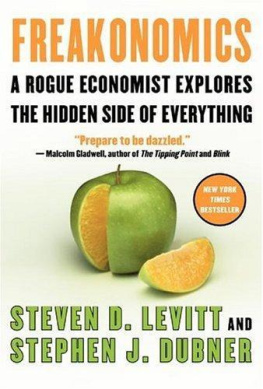
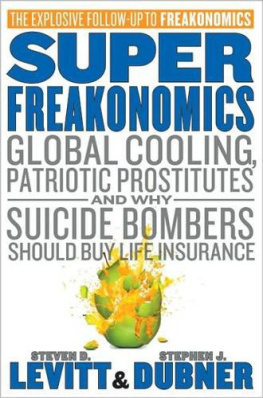


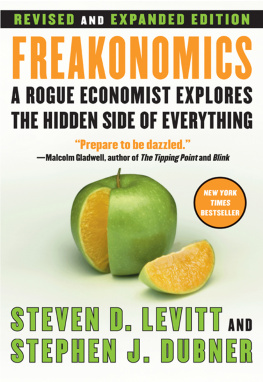
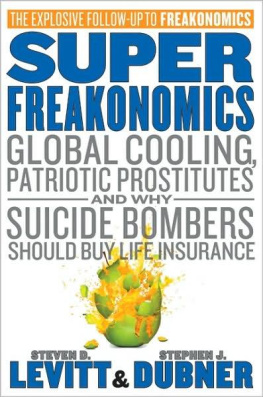
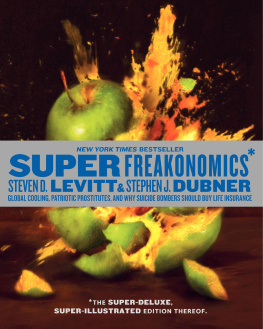
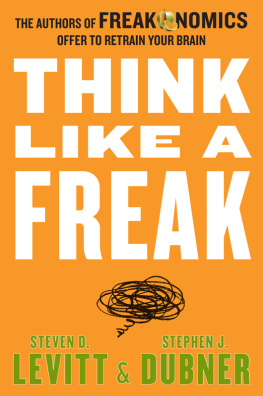
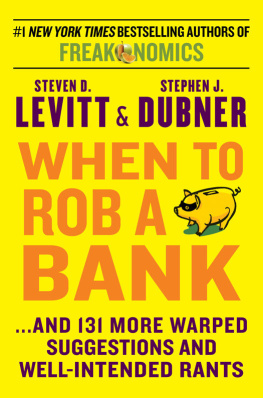
![Dubner Stephen J. - Super freakonomics : [global cooling, patriotic prostitutes and why suicide bombers should buy life insurance]](/uploads/posts/book/76604/thumbs/dubner-stephen-j-super-freakonomics-global.jpg)
